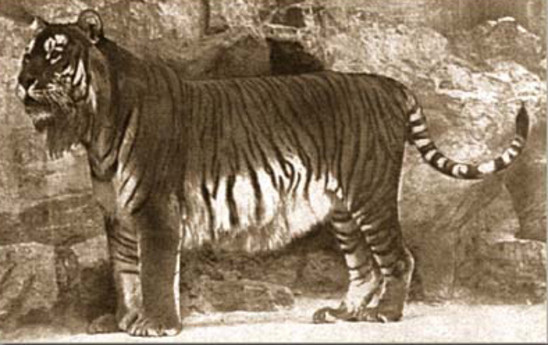Tiger
Caspian tiger (P. t. virgata)
According to the revised taxonomy of the Felidae, the tiger subspecies Panthera tigris virgata is included into the subspecies Panthera tigris tigris.
The Caspian tiger has been extinct since the early 1970s due to hunting of tigers and their prey, and habitat loss mostly due to settlement in its range. The Caspian tiger occurred in eastern Turkey, southern Caucasus, northern Iran, Iraq, and in isolated pockets throughout Central Asia as far as northwestern China. It inhabited mostly seasonally flooded riverine land consisting of trees, shrubs, and dense stands of tall reeds and grass up to six meters in height. The last known tiger in the Caucasus region was killed in 1922 near Tbilisi, Georgia, after taking domestic livestock. The last known tiger in Turkey was killed near Uludere Hakkari province, in 1970. The only tiger reported from Iraq was killed near Mosul in 1887. The last known tiger in Iran was killed in 1959 in Mohammad Reza Shah (now Golestan) II. One tiger was killed near the Lob Nor basin in Xinjiang, China in 1899 and tigers had disappeared from the Tarim river basin in the Tian Shan mountains, west of Urumyi, in the 1960s. The last record of the tiger on the Ili river, their last stronghold in the region of Lake Balkhash dates to 1948. In the mid-19th century, tigers were killed 180 km northeast of Atbasar, Kazakhstan and near Barnaul, Russia. These outlying records in the north of the tiger's range in the former Soviet Union are located up to 1,000 km outside their permanently inhabited range, when tigers followed herds of migratory prey species (reindeer, wild pig).

- This photo of a tiger from the Caucasus in the Berlin Zoo was published in 1899.

